|
SilNylon Pyramid
Tent
(1 pound, 9 ounces)
Back in 1985, I bought a Chouinard Pyramid (now available in a slightly larger
version from Black Diamond as the "Megamid.") It is a minimalist tent consisting of a coated nylon pyramid tent body, no floor,
and a single adjustable center pole. For several years, this was my only tent. I used it almost every week-end for one entire
year of college, when I spent only three week-end nights indoors from September through April.
The Pyramid is still my favorite ski touring tent. It is light weight and
compact, which is nice when snow camping, because you are always carrying too much gear anyway. You can bury the edges in
the snow and construct an extremely bombproof shelter. You don't have to worry about getting snow inside the tent, as there
is no floor. You can sculpt your beds into the snow, and construct shelves and whatnot to hold your stuff. It's kind of like
sleeping in a snow cave, only it takes only a few minutes to construct. The only thing to be careful of, is that you need
to leave the door of the tent open just a little, or else make sure not to completely bury all of the tent edges. The tent
fabric is non-breathable, and you will find yourself running out of fresh air unless you have left some sort of breathing
hole.
The pyramid also does well as an all season tent in relatively arid climates,
where precipitation typically doesn't last for too long. When battened down, the tent is surprisingly weatherproof, and can
protect you from heavy thunderstorms and the like. The pyramid is quite spacious, with plenty of room for two people plus
gear.
One thing the pyramid doesn't do well is protect you from hard, persistent
rain that lasts for days and days. There is no floor, and if you can't find a dry place to pitch the tent, you'll end up sleeping
in the mud or in the middle of a stream. The other shortcoming is bug protection. In heavy bug country, the floorless design
allows evil blood-sucking bugs to attack you at night.
Overall, the pyramid is perfect for places like Colorado or Utah, where you
are unlikely to be camping in day after day of rain, and where winter camping involves camping on snow. For spring and summer
camping in bug country, and places like the North-East where it rains lots, the pyramid might not be such a good choice.
When my original Chouinard Pyramid began to wear out, I had another one made
out of ultralight silicone coated parachute cloth. This super light material makes my new pyramid even more light and stuffable
than my original Chouinard model. Weight of the parachute cloth pyramid is one pound, nine ounces (not including pole
or stakes). Not long afterward, Black Diamond came out with their own lightweight version, dubbed the "Mega Light."
Over the years, I've seen a number of accessories for pyramid tents; things like zip-in floors, inner bug
netting tents, etc. My problem with all these accessories is that by the time you start adding all these things to your
pyramid, you are just adding weight and bulk and complication to a shelter whose primary strengths are light weight and simplicity.
If you want a tent with a floor and bug netting, there are probably better options than an accessorized pyramid.
One pyramid accessory that is definitely worth buying however, is the Black
Diamond Pole Link Converter. This ingenious little piece of gear costs only $5, weighs less than 2 ounces, and straps
two of your trekking or ski poles together so that they can act as a single long pole for the pyramid tent.
| Black Diamond Pole Link Converter |
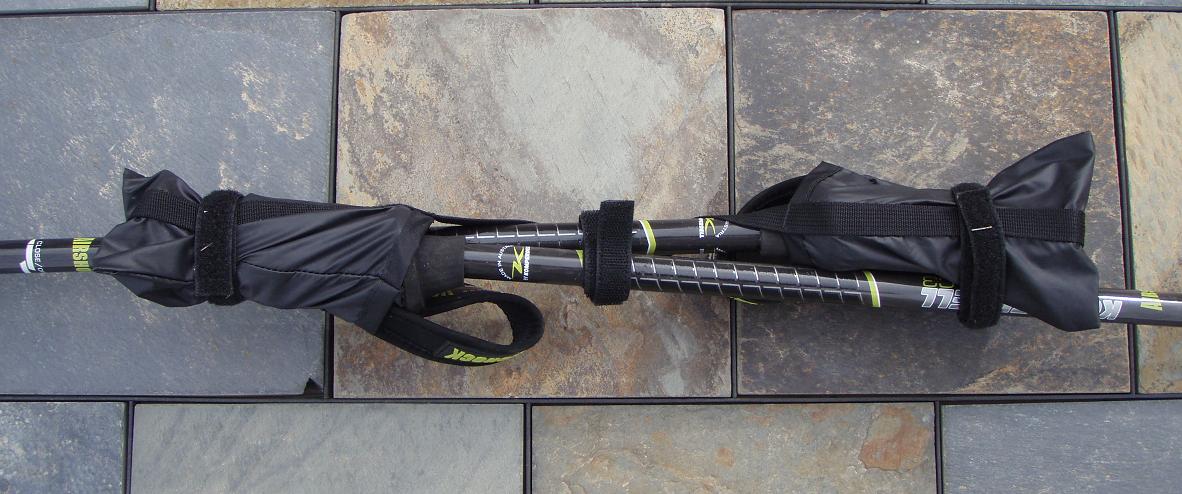
|
| Pyramid on the Teton Crest Trail |
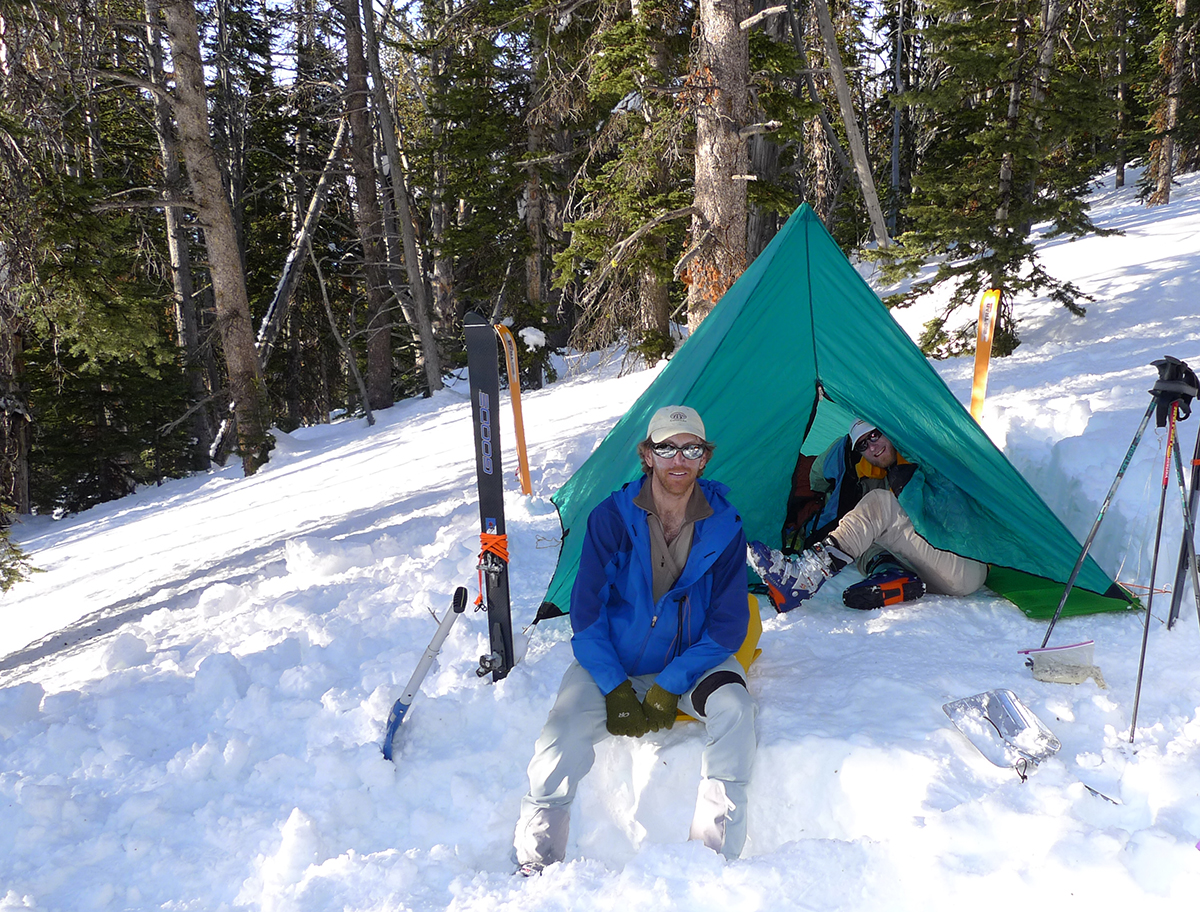
|
| Home sweet home for 3 people |
| Original Chouinard Pyramid, and Sil Nylon Version |
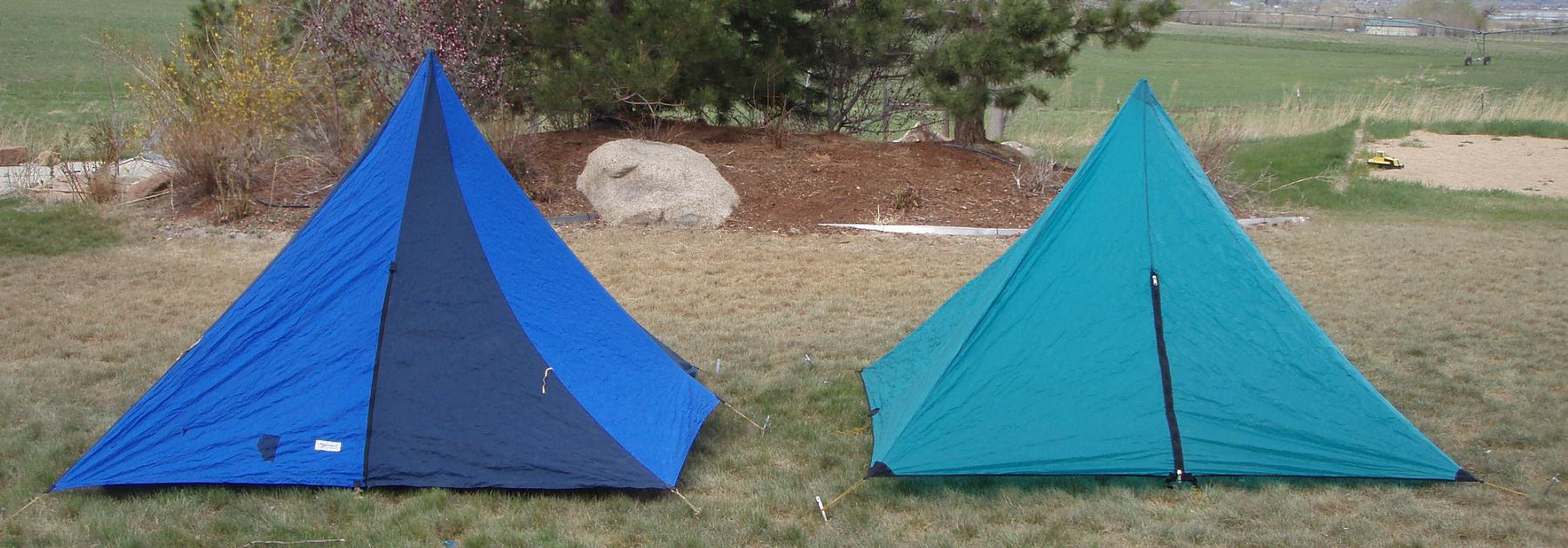
|
Integral Designs Sil Shelter
(15 ounces)
This is a minimalist, three season tarp shelter for two people that weighs
less than a pound. It is made of ultralight silicone coated parachute cloth. It is wedge shaped, and has enough room for two
people with minimal gear. It has no pole, and is designed to be used with a trekking pole. The shelter is not spacious, and
there isn't room to sit up. Also, the shelter is pretty low at the foot, and your toes will brush the ceiling when it's
staked down close to the ground. On the plus side, its low profile performs very well in windy conditions.
I had a zipper sewn in. This added a couple of ounces, but greatly improved
the sil shelter's weather-resistance. My experience was that in rain, the zipperless overlapping closure didn't work very
well.
With the zipper, I've
used it in wind and rain, and it has performed very well under these conditions. I haven't used it in snow.
My guess is that it would perform poorly in snowy conditions, as the walls are not steep enough to shed snow, and the long,
tapering ridgeline seems like it wouldn't shed snow very well either.
For an ultralight summer shelter, it works well. It is my shelter of choice
for high country overnighters when the weather report indicates good weather and I'm planning on sleeping under the stars,
but I want to be prepared just in case. In other words, if I'm worried about bad weather, I will likely take something
else, but it works well for a back-up shelter for protection against the occasional high-country thunderstorm.
| Silshelter |
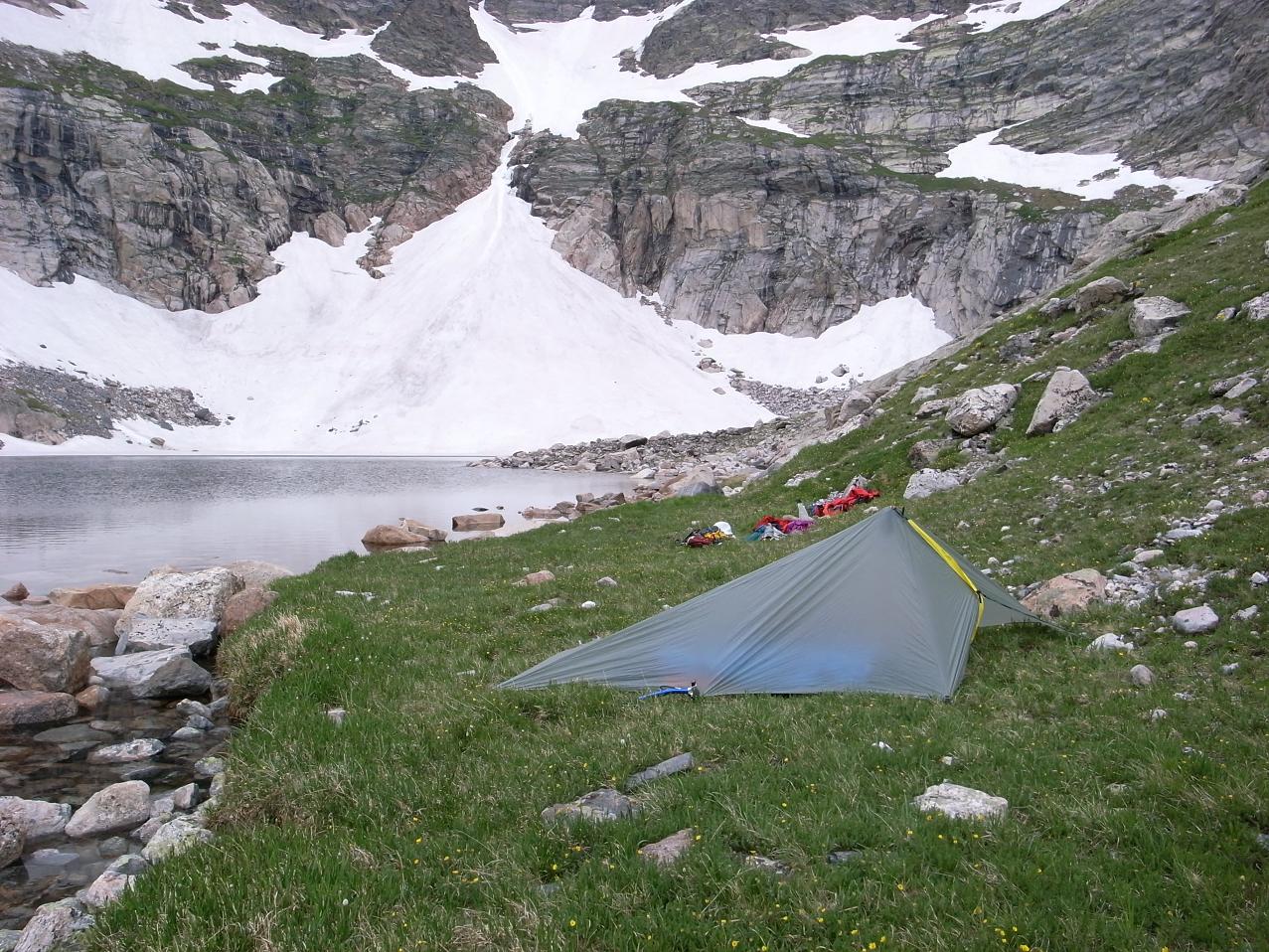
|
| A great "just in case" shelter |
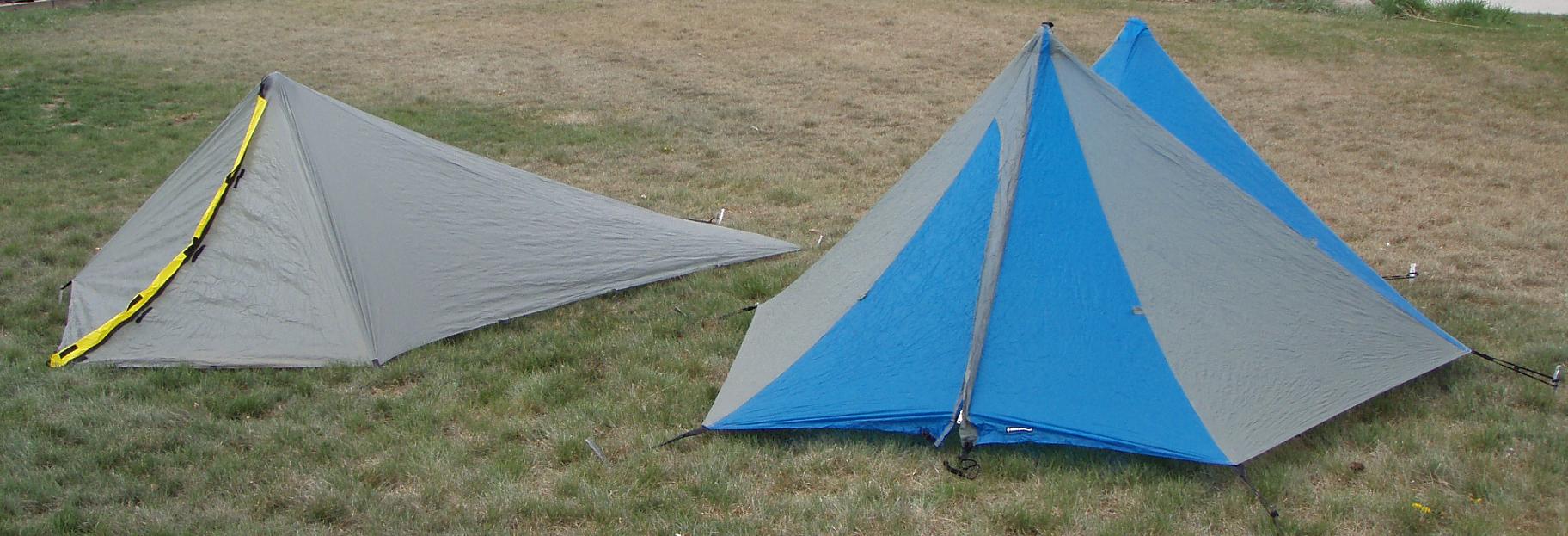
|
| Integral Designs Sil Shelter (left) and Black Diamond Beta Light (right) |
Black Diamond "Beta Light"
(1 pound, 3 ounces)
The Beta Light is an upgraded Sil Shelter. For an extra 4 ounces, you get significantly
more room because the shelter is supported by two poles rather than just one. This gives extra space in the shelter
for storage of gear and also adds better snow-shedding capability. I still prefer the original single pole pyramid design
for snow camping because I like the extra headroom of the pyramid and I find the single pole easier to pitch in the snow.
However, the Beta Light is an excellent 3 season shelter for two people going light. It is a good choice for alpine
rock climbs in the Summer, where you're hiking in and camping overnight. With your pack full of ropes harness,
and rock gear, it's good to have a lightweight shelter option to cut down on weight and bulk on the approach hike.
| Contrail |
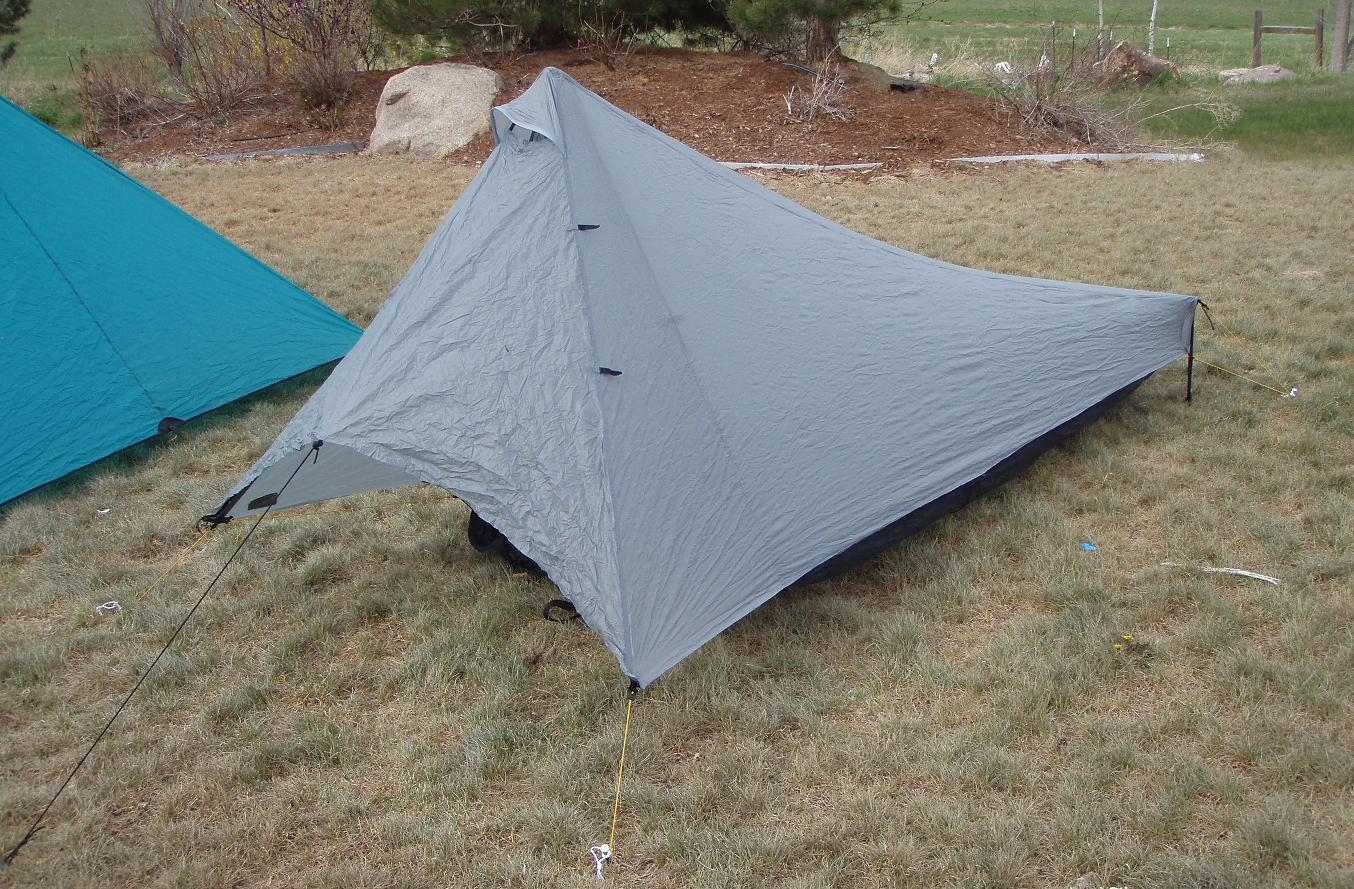
|
Henry Shires Tarp Tent "Contrail"
(1 pound, 10 ounces)
The Contrail is made by Henry Shires/Tarptent.
As the manufacturer’s name implies,
it is a hybrid of tarp and tent. Unlike the other tarps I own, it has a floor and full coverage mosquito netting.
It pitches easily, using a single trekking pole for the front support, and integrated struts
to provide some support and height at the rear of the tent.
The tent canopy is made of a lightweight silicone coated nylon. The floor is not connected directly to the
canopy, but rather hangs down loosely, supported by mesh panels which provide ventilation. The materials are very lightweight,
and care must be taken not to abuse the tent. Don't pitch it on pokey rocks or sharp sticks, or you will perforate the
floor.
Space is very good for one person, with plenty of room inside the tent. There is also
a small vestibule that provides some room for gear storage or cooking in rainy weather. There is enough room in this
tent for an adult and a dog, or an adult and a child (I've done both, and was reasonably comfortable.)
It's not designed for snow loading, so it's pretty much confined to 3 season use. It
does shed rain well, provided that the rain isn't accompanied by high winds. I've used it in moderate winds, and it
has performed well, providing a secure shelter. It's important to stake it out well in such conditions. However,
this tent does not perform so well in heavy winds, particularly if accompanied by rain. In high winds and driving rain,
you're likely to get wet. Maybe not soaked, but I've experienced rain blowing under the sides and through the ventilation
peak at the front of the tent. Careful site selection, and careful pitching can minimize issues in heavy weather, but
serious mountain storms are not what this tent was designed for.
In spite of its limitations, the Contrail is a very well designed piece of kit, and has become
my solo backpacking shelter of choice for summer months. It's comfortable, has great ventilation, and is very livable.
When I'm backpacking (as opposed to climbing) I appreciate a bit of luxury, and the Contrail provides luxury solo accomodations
for less than two pounds.
| Inside the Contrail |
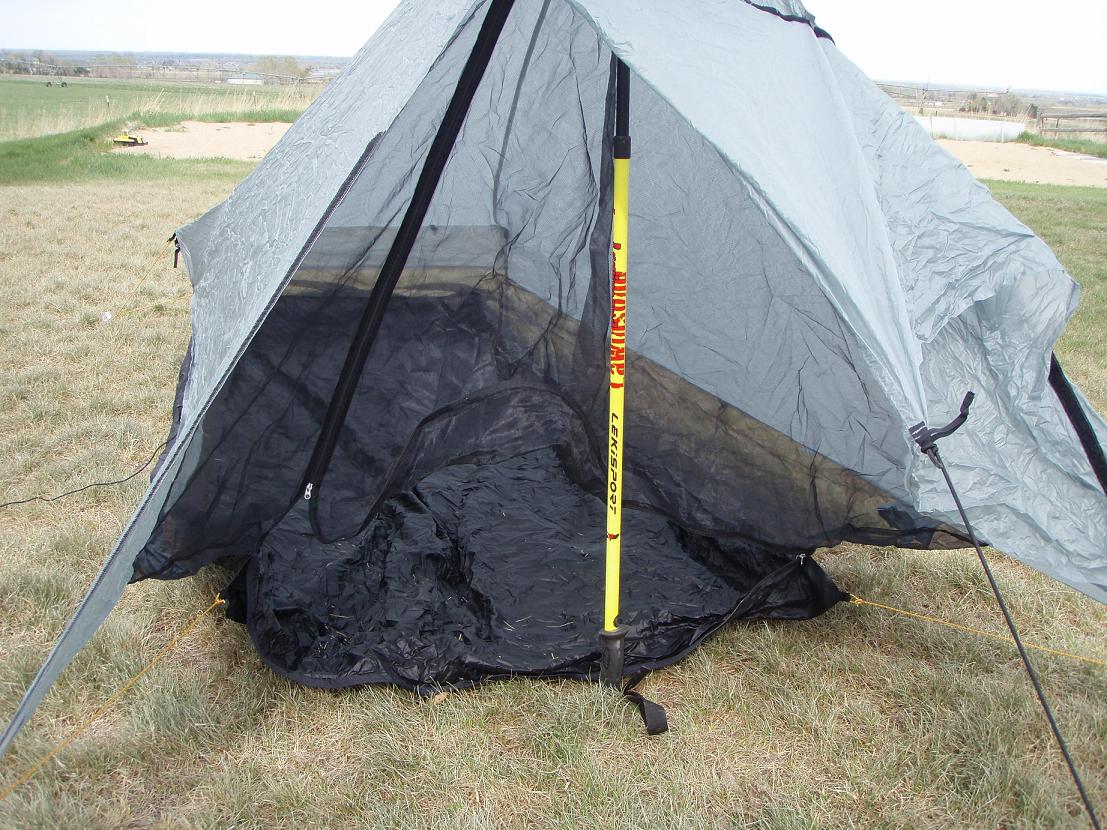
|
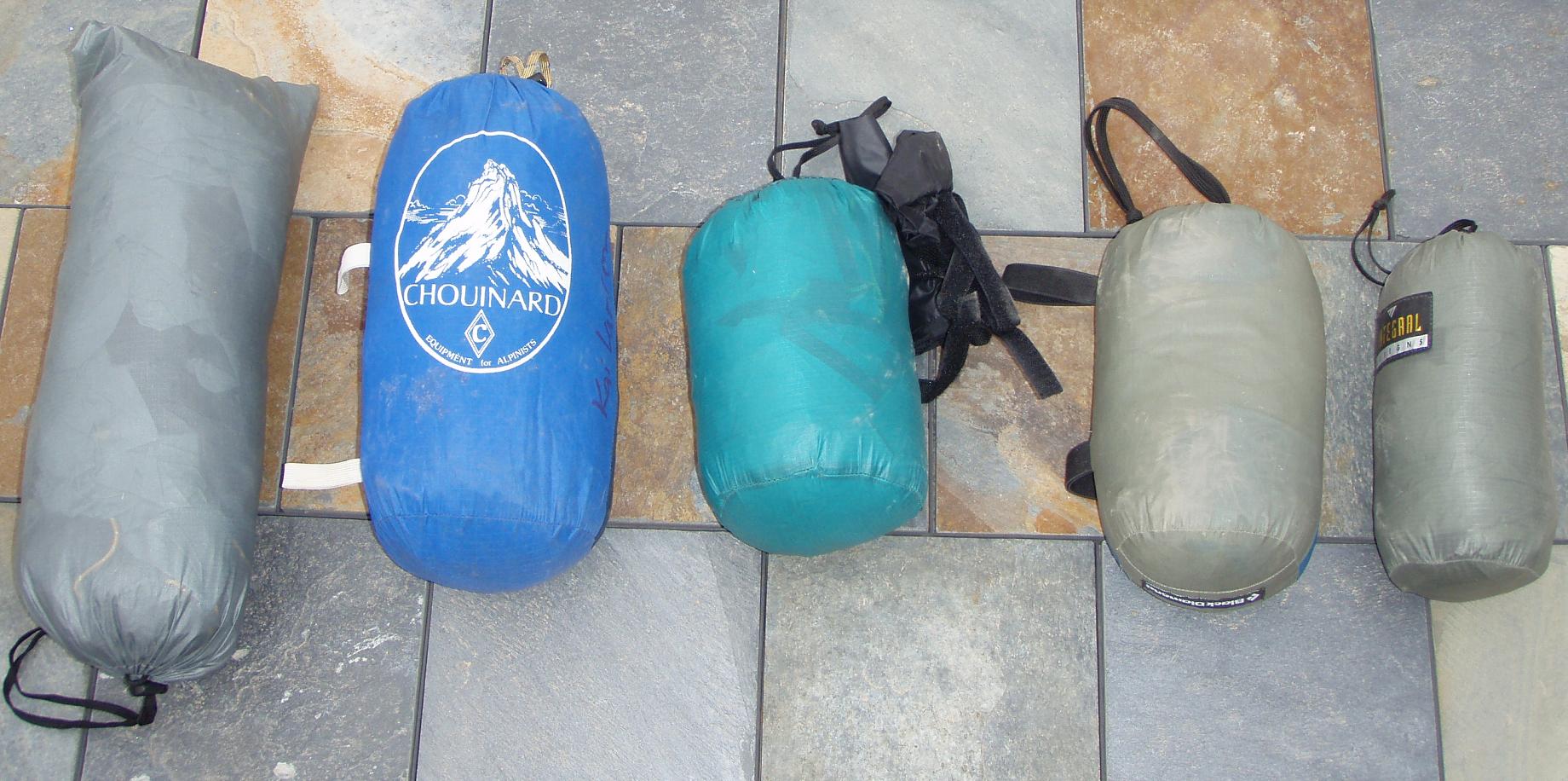
|
| Contrail; Chouinard Pyramid; SilNylon Pyramid; BD Beta Light; ID SilShelter |
|

